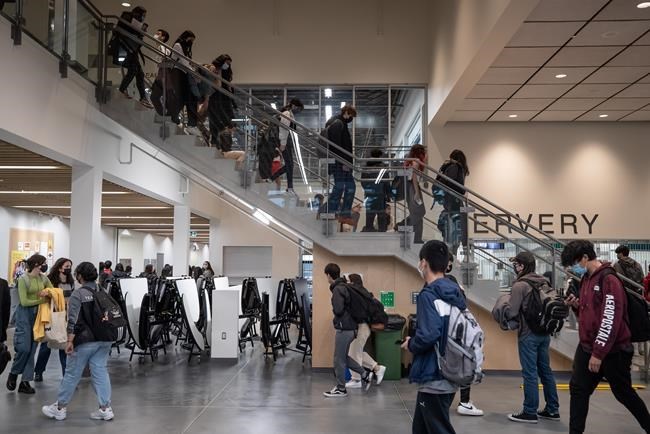NEW WESTMINSTER, B.C. — The relocation of the construction of a secondary school in New Westminster, B.C., once planned to be built over a cemetery not used in a century, is an example of reconciliation in action, an advocate says.Â
New Westminster Secondary School officially opened Thursday after three years of construction.Â
The former school, which was declared seismically unsafe, sits on top of a cemetery used by the Indigenous, Chinese and Sikh communities.Hospital patients from a psychiatric asylum, the indigent andexecuted prisoners were also buried there from the mid-1800s to 1920.
Bill Chu, the chief executive officer of the Canadians for Reconciliation Society, said he hopes the school's opening and a proposed memorial for the old site where the cemetery sits will start a conversation about reconciliation.Â
Chu's group had campaigned against the school being rebuilt on its former site and he praised the decision to move the school. Â
"What we have has been trying to say is reconciliation isn't just a government apology," he said in an interview. "It takes the effort of the whole community to participate in reconciliation and this shows how engaged Canadians are to embrace a new future."
Historian Rob McCullough said the discussion and debate around the school's construction highlight a part of the city's history that has been ignored by the wider community.
“There’s a piece of our story that’s missing, a piece of our city’s narrative that’s missing by the absence of those names and graves in the community," said McCullough, the manager of museums and heritage services for the City of New Westminster.
"I think it’s a piece of the story that’s reflective of the marginalized and diverse voices we don’t always hear," he said in an interview.Â
A 2007 report done for the city said there was no indication of graves being exhumed after the 1930s.Â
The site, known as the Douglas Road cemetery, was taken over for the Second World War effort briefly before the school was built.Â
"Research undertaken to date has yielded no evidence of any major exhumations from the cemetery either before or in association with the development of the school grounds, which began in 1948," the 2007 report says.Â
McCullough said there is a lack of consensus on when tombstones and other burial markers were removed, which he said deserves further examination.
"It's a good reason to be asking those questions," he said.
Archie Miller, who was a curator with the city for nearly 27 years and wrote a report about the site for the local school district, said he is surprised by the shock expressed at the school being on a former cemetery.
Miller, who attended the school in the 1950s, said its history was well-known at the time.
"It was not a secret. Some people have said people didn't know this and it was kept quiet, but no, it was there and people knew it was a cemetery," he said.
Both Miller and Chu say they believe a monument would be a good way of memorializing those buried on the property.
Karim Hachlaf, the school district's superintendent, said in a statement the school will develop and build educational components throughout the site to educate students and residents about its cultural and historical significance.
This report by The Canadian Press was first published Oct. 14, 2021.
Nick Wells, The Canadian Press

